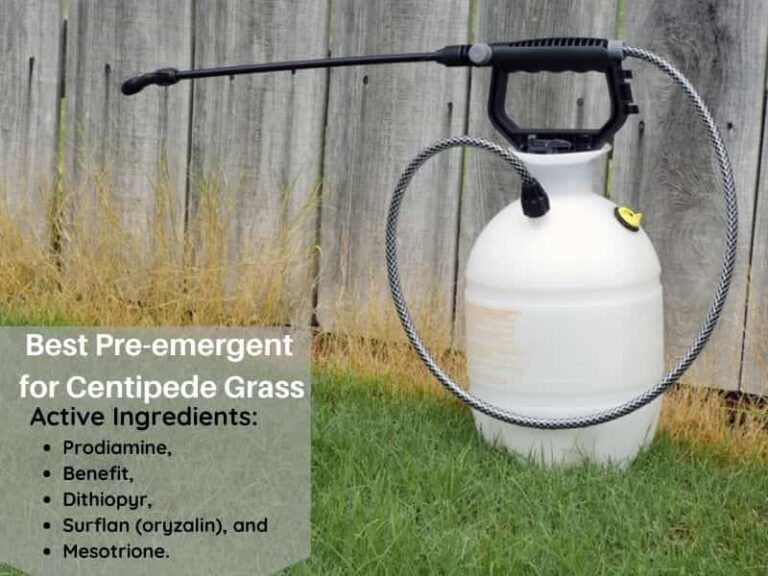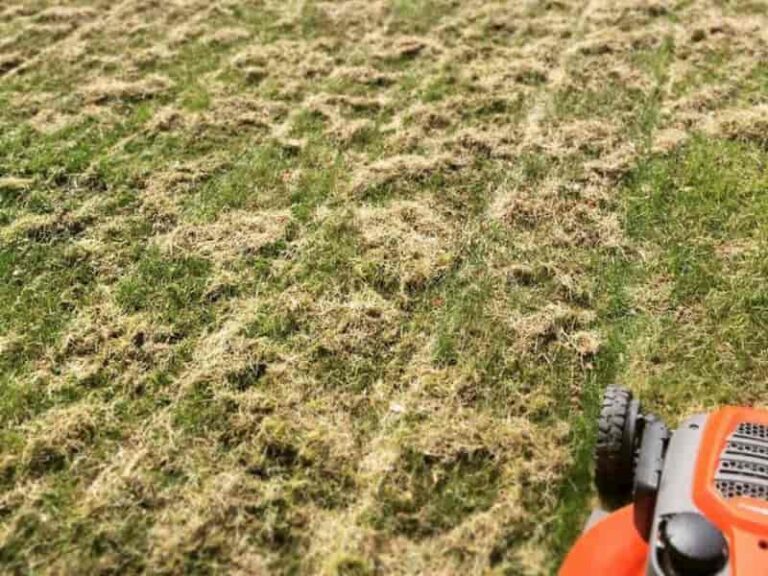Guide for Overseeding Centipede Grass
Overseeding grass is one of the ways to promote its thickness, provide a lush surface, and improve the overall outlook of your space.
Centipede grass spreads slowly compared to other warm-season grass species such as bermudagrass, Zoysia grass, Bahia grass, etc. You can overseed centipede grass to make it appear thicker, spread your turf quicker, or give your lawn a lush green appearance.
Should I overseed centipede grass?
Overseeding is an ideal technique for maintaining a healthy lawn throughout the year. You can decide to overseed your space with a warm-weather species such as bermudagrass during spring and summer or to overseed your turf using a cool-season variety for a green surface during the fall and winter.
Some grass species readily complement each other concerning disease susceptibility, PH, growing zones, and soil types. Proper overseeding can help you maintain a green lawn before your centipede grass develops and forms an intricate turf.
Best grass to overseed centipede lawns with
You can opt for different turfgrass varieties when looking for an ideal type to overseed with your centipede grass.
Considerations to make when choosing a match include soil compatibility, ideal growth zones, spreading speed, and competition for nutrients compared to centipede grass.
Here are some of the best grass types to overseed your Centipede grass lawn
Bermuda Grass
Bermuda grass is a highly suitable turfgrass variety ideal for overseeding centipede grass. Both grass species prefer growing under warm weather conditions and prefer similar growing zones (7-9).
The Bermuda grass is a fast-growing species that can reach a height of between 10 and 40 cm. Centipede grass on the other side reaches an average elevation of about 12-13 cm. Bermuda grass provides the best overseeding option for an owner looking to overseed their centipede grass; the latter forms a compact turf much sooner, is less prone to pests and diseases, is more resistant to salt and foot traffic.
If left unchecked, Bermuda grass can overtake and inhibit the growth of centipede plants since centipedes can take up to 2 yrs to achieve a mature turf. However, unlike the Bermuda species, centipede grass can tolerate higher alkalinity, lower maintenance needs, etc.
Fescue Grass
Fescue grass is a cold season grass that also grows under warm conditions. However, the grass is more suited for growing in the colder growing zones. Fescue grass mixes well with centipede grass.
You can overseed your centipede grass with an ideal fescue variety to ensure your lawn does not deteriorate during the colder months. It’s best to seed your fescue grass at the onset of fall (although you can also plant the grass during late summer).
It’s crucial to trim your lawn regularly. Fescue grass grows quite tall (up to 4 inches in height). If left unchecked, the grass can deprive your spreading centipede grass and inhibit the development of new leaves. Centipede grass also requires little maintenance, making it an ideal choice for those looking to overseed their lawn.
Depending on your location, it may be possible to overseed your grass with Ryegrass, St. Augustine grass, and Bahia grass.
How to overseed centipede grass
You can use several techniques to overseed your centipede grass. As with other grass varieties, centipede grass requires overseeding according to some fundamental guidelines.
For instance, mending damaged patches on your lawn is a crucial step before overseeding. It’s also imperative that you conduct sufficient research on your grass choice, potential problems, and repercussions of overseeding centipede grass with your turf grass choice.
Here’s how you can overseed centipede grass within your space.
1. Clear the lawn of debris
Prepare your lawn surface by removing debris such as sticks, dry leaves, bits of paper, and other unnecessary materials from your grass. You can also choose to mark out the areas that require extensive overseeding/special attention. Marking chalk can be a useful compound in determining the dimensions and boundary lines of the affected surface.
You can also regulate the shade levels during the preparation stage. Although Centipede grass can thrive under a moderate shade, some grass varieties may suffer if grown under a thick shade.
2. Mow your grass
It’s crucial to mow your grass before overseeding. The recommended mowing height for centipede grass is about 2.5 cm to 4 cm.
However, when mowing your lawn for overseeding purposes, it’s advisable to clip your grass to a shorter height than usual (usually about ⅓ of the leaf). The idea is to reduce foliage growth and allow the seeds to reach the soil, access sunlight, and water during seeding.
You can use a clipping bag to carry off excess foliage, notably when the grass has grown for a considerable time before you mow it. You can also decide to leave the cut foliage on your lawn when the grass blades are short and do not affect the overseeding process.
3. Rake/Aerate/Dethatch your lawn
Dethatching is an effective means of eradicating dead grass from your lawn. Centipede grass is a perennial turf variety that requires dethatching at least once a year.
You can choose between different tools when dethatching your lawn. For a small space, it’s best to use a regular rake to tug at the grass while taking care not to damage roots and other vital parts of your plant.
Dethatching helps you expose sections prone to water-logging, poorly watered spots, etc. It’s preferable to dethatch before spring when the grass has not yet fully recovered from winter dormancy.
You can also decide to aerate your lawn during this stage. Conduct a “Screwdriver test” to determine whether it’s necessary to aerate your lawn. The test involves pushing a screwdriver deep into the soil and using your observations to decide whether it’s time to water or aerate your surface.
Aeration helps improve the soil’s ability to intake air, provides small holes for seeding, and scatters the earth to create a soft cushion ideal for germinating seeds. Remember to water your lawn after completing the procedure.
4. Select quality seeds plus a spreader
The quality of your seeds has a significant impact on how lush your lawn becomes after overseeding. Selecting high-quality plants guarantees a high yield and favorable results.
Always make sure that you purchase your turf grass seeds from a recognized buyer to prevent ripoffs and poor products. Some varieties require specialized care and attention during the early stages of growth.
For instance, some seed types have varying soil drainage requirements. Centipede grass grows well under sandy, well-drained soils but is susceptible to soils with high salinity.
You might also want to consider external aspects such as optimal weather conditions, water/shade tolerance, susceptibility to diseases, etc. Overseeding with poorly matching grass types can negatively affect the outlook and aesthetics of your lawn. Besides, some grass species are also problematic to eradicate once they establish themselves.
5. Seed your centipede grass
The ideal seeding procedure depends primarily on the turfgrass species in use. Experts recommend spreading between 0.25 and 0.5 pounds per 1000 square feet when seeding centipede grass.
Other grass varieties share unique specifications. Bermuda grass, for instance, requires 2 to 3 pounds of seed per 1000 square feet. It’s crucial to follow the turfgrass planting guidelines to ensure a quality finish.
Lawn spreaders are excellent tools for regulating the quantities of seeds dispersed over a surface. Most models have customized settings that allow you to properly adjust the number of grains you spread over a surface.
Remember to consistently keep the soil moist after seeding by regularly watering your lawn. Short sessions spread about two times a day are suitable to safeguard against water-logging, which can damage the young seeds.
It is also a good idea to add some mulch soon after seeding. Mulching helps conserve water during summer and other warmer seasons when overseeding centipede grass is common.
6. Feed/Apply fertilizer to your centipede grass.
Applying fertilizer to your grass is a sure way of ensuring a healthy, lush green lawn. Fertilizer helps to provide essential nutrients that help your grass prevent diseases, promote foliage growth and root development.
When overseeding centipede grasses, it is crucial to consider the nutrient requirements of both grass species, especially if the two varieties actively grow during the warm season. Centipede grass requires moderate quantities of nitrogen, minimal concentrations of potassium, and no phosphorous.
Slow-release organic fertilizers are suitable options for feeding a grass lawn. Most have significant concentrations of essential nutrients that can meet the plants’ nutrient requirements for a considerable time.
Besides, organic fertilizers are safe for the environment and rarely harm your grass.
7. Watering
Water plays a significant role in the development of a healthy lawn. Most grass species require regular watering during their active growing phase to stimulate new foliage, root development and spread evenly over a surface.
Centipede grass needs about an inch of water per week during its active growing period. However, the species can survive without constant watering allowing for a more flexible watering schedule. Experts also advise on adding sand to your lawn as the grass grows.
The species root system is shallow compared to other varieties, making it prone to infections from saturated soils. Sand improves the soil’s drainage and safeguards the plants sensitive parts.
When to overseed
Centipede grass is a warm-season grass variety that grows actively during spring and summer. The best time to overseed centipede grass is just before the onset of its active growing phase.
An ideal method involves testing the soil surface for frost. Centipede grass does not tolerate extreme cols. It’s therefore advisable to wait until the ground’s surface completely thaws before attempting to overseed your grass.
You can also overseed centipede grass with a winter/cool-season variety during the fall. The centipede grass remains dormant within the soil until the onset of spring when the cool-season grass enters dormancy.
Maintain centipede grass after overseeding.
Centipede grass requires little maintenance. However, if you are overseeding your lawn with high-maintenance grass, it might require regular monitoring and maintenance.
Here are some helpful tips
- Mowing– Always ensure that your grass maintains a regular height by mowing the grass regularly during its active season.
- Watering– Water your grass at least once a week to maintain moisture. Short 10 minute sessions are more effective.
- Applying Fertilizer– Feed your grass regularly using ideal mixes.
- Aeration– Aeration is essential for soil quality. Ensure you aerate your lawn at least once a year to keep the soil soft




